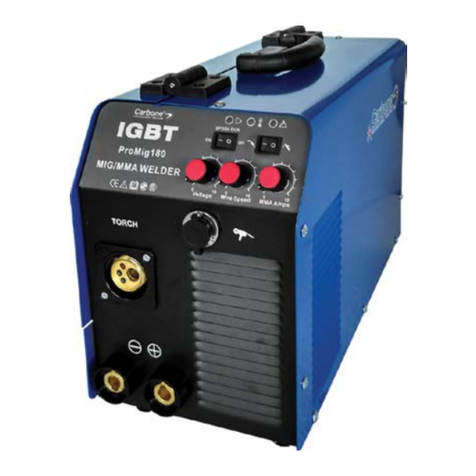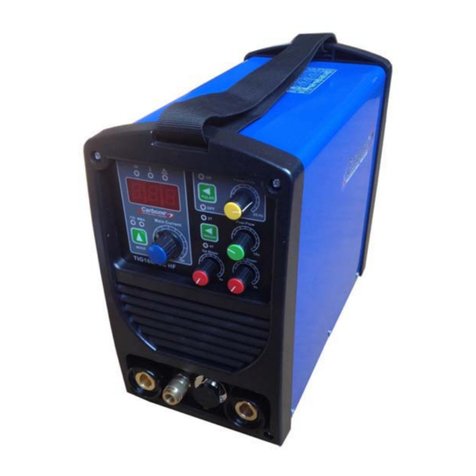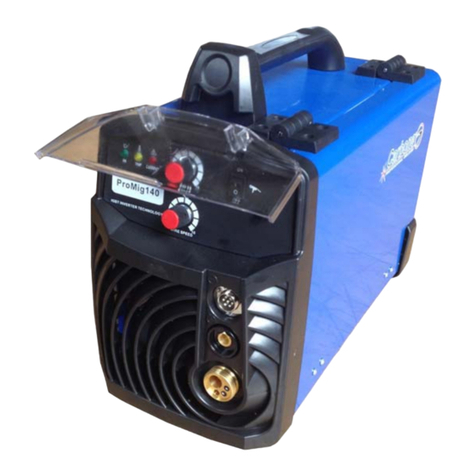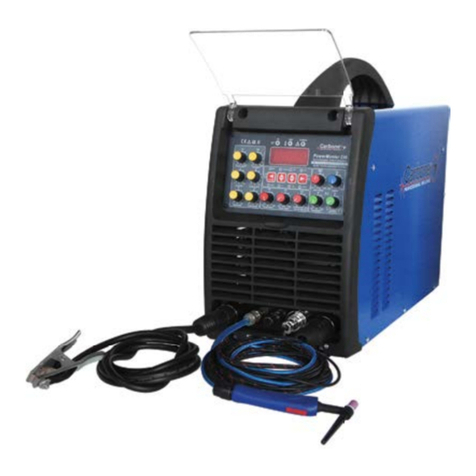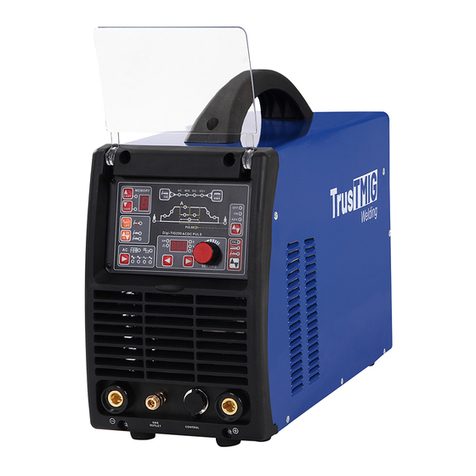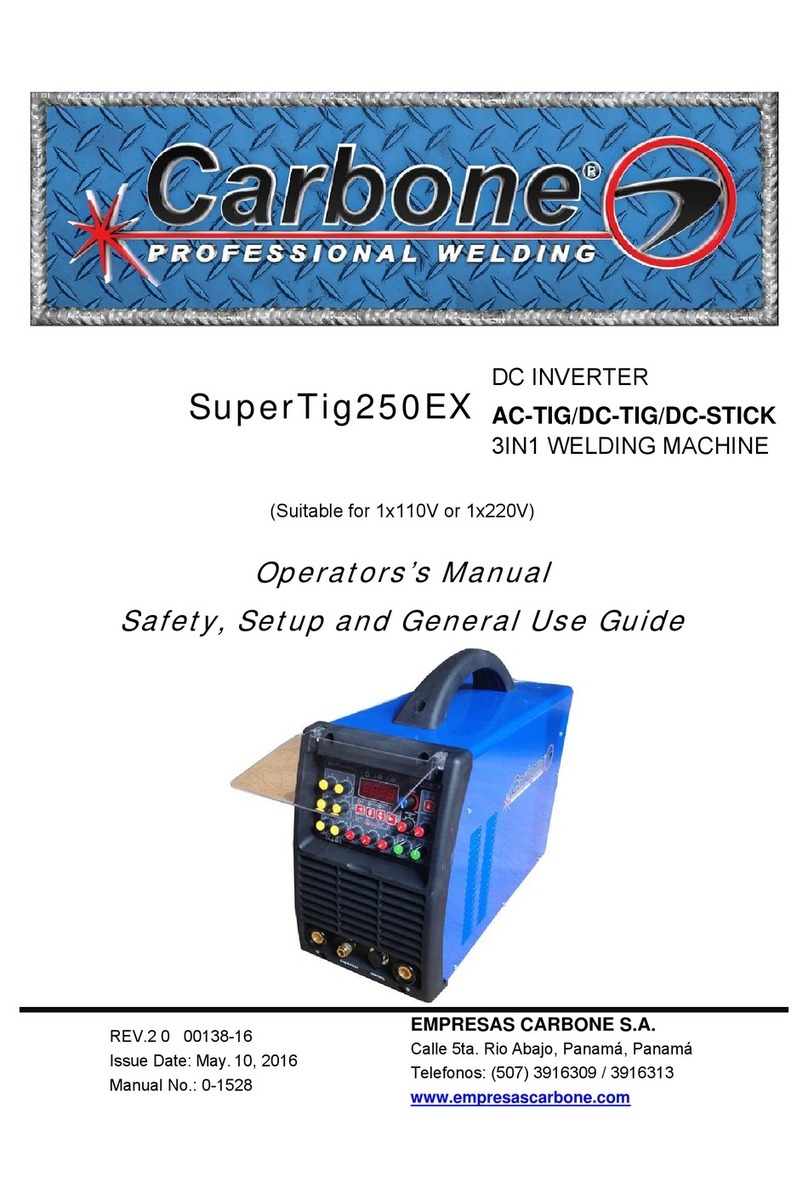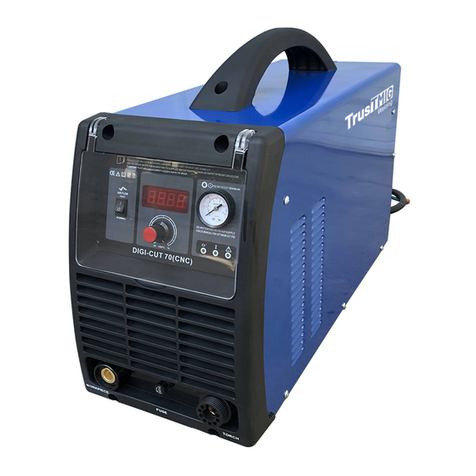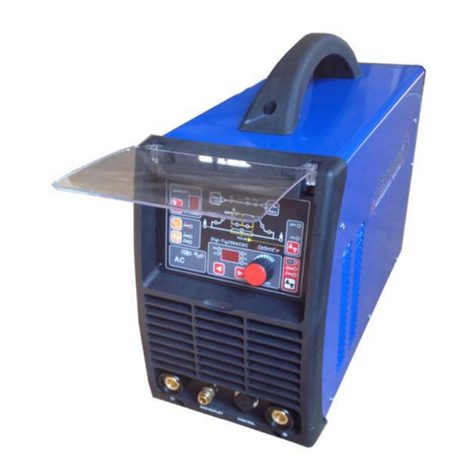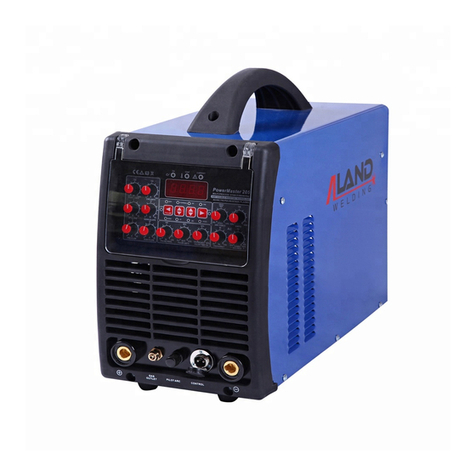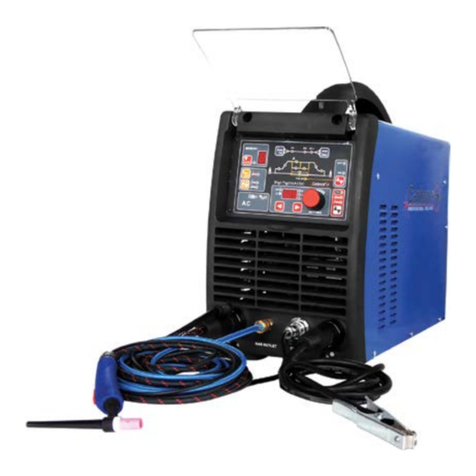
WARNING! Electrical shock can kill. Make sure all electrical equipment is properly
grounded. Do not use frayed, cut or otherwise damaged cables and leads. Do not stand, lean
or rest on ground clamp. Do not stand in water or damp areas while weld-ing or cutting. Keep
work surface dry. Do not use welder or plasma cutter in the rain or in extremely humid
conditions. Use dry rubber soled shoes and dry gloves when welding or cutting to insulate
against electrical shock. Turn machine on or off only with gloved hand. Keep all parts of the
body insulated from work, and work tables. Keep away from direct contact with skin against
work. If tight or close quarters ne-cessitates standing or resting on work piece, insulate with
dry boards and rubber mats designed to insulate the body from direct contact.
All work cables, leads, and hoses pose trip hazards. Be aware of their location and
make sure all personnel in area are advised of their location. Taping or securing ca-bles with
appropriate restraints can help reduce trips and falls.
WARNING! Fire and explosions are real risks while welding or cutting. Always keep
fire extinguishers close by and additionally a water hose or bucket of sand. Periodi-cally check
work area for smoldering embers or smoke. It is a good idea to have someone help watch for
possible fires while you are welding. Sparks and hot metal may travel a long distance. They
may go into cracks in walls and floors and start a fire that would not be immediately visible.
Here are some things you can do to reduce the possibility of fire or explosion:
* Keep all combustible materials including rags and spare clothing away from area.
* Keep all flammable fuels and liquids stored separately from work area.
* Visually inspect work area when job is completed for the slightest traces of smoke or embers.
* If welding or cutting outside, make sure you are in a cleared off area, free from dry tender and
debris that might start a forest or grass fire.
* Do not weld on tanks, drums or barrels that are closed, pressurized or anything that held
flammable liquid or material.
Metal is hot after welding or cutting! Always use gloves and or tongs when handling hot
pieces of metal. Remember to place hot metal on fire-proof surfaces after han-dling. Serious
burns and injury can result if material is improperly handled.
WARNING! Faulty or poorly maintained equipment can cause injury or death. Prop-
er maintenance is your responsibility. Make sure all equipment is properly maintained and
serviced by qualified personnel. Do not abuse or misuse equipment.
Keep all covers in place. A faulty machine may shoot sparks or may have exploding parts.
Touching uncovered parts inside machine can cause discharge of high amounts of electricity.
Do not allow employees to operate poorly serviced equipment. Always check
condition of equipment thoroughly before start up. Disconnect unit from power source before
any service attempt is made and for long term storage or electrical storms.
Further information can be obtained from The American Welding Society (AWS) that
relates directly to safe welding and plasma cutting. Additionally, your local welding supply
company may have additional pamphlets available concerning their products. Do not operate
machinery until your are comfortable with proper operation and are able to assume inherent
risks of cutting or welding.
SAFETY PRECAUTIONS
